
A walk in Hockney’s Yorkshire
Joyful zingy colours, exuberant strokes and large formats typify David Hockney’s exciting take on the rolling landscapes of his home county. Chris Gee walks the Yorkshire Wolds Way in search of the views that inspired the influential artist
Photos: Olivia Brabbs
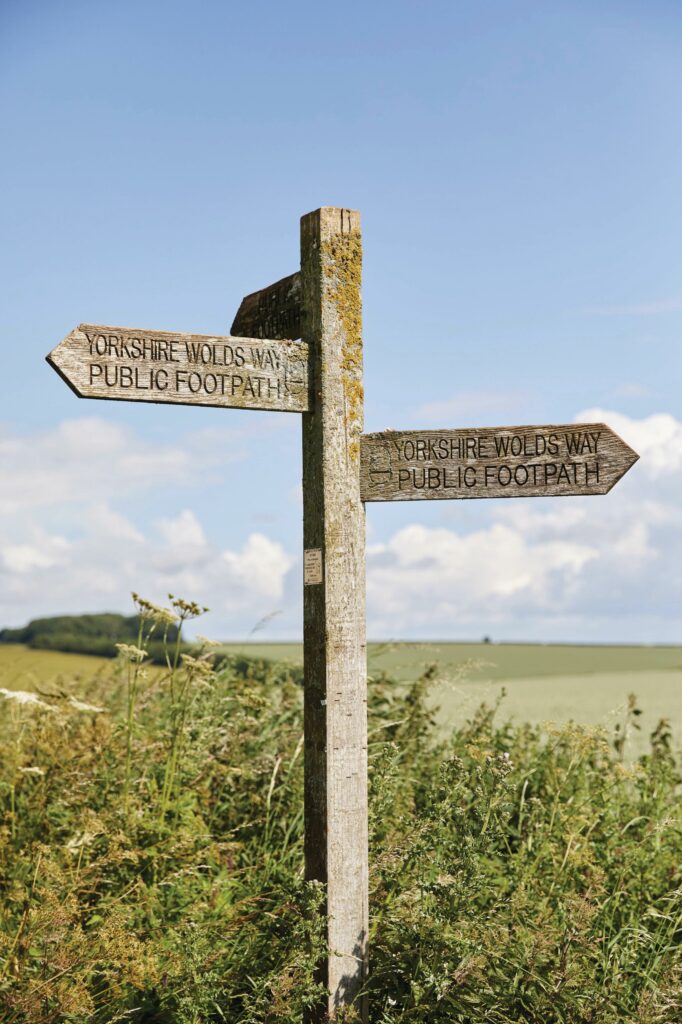
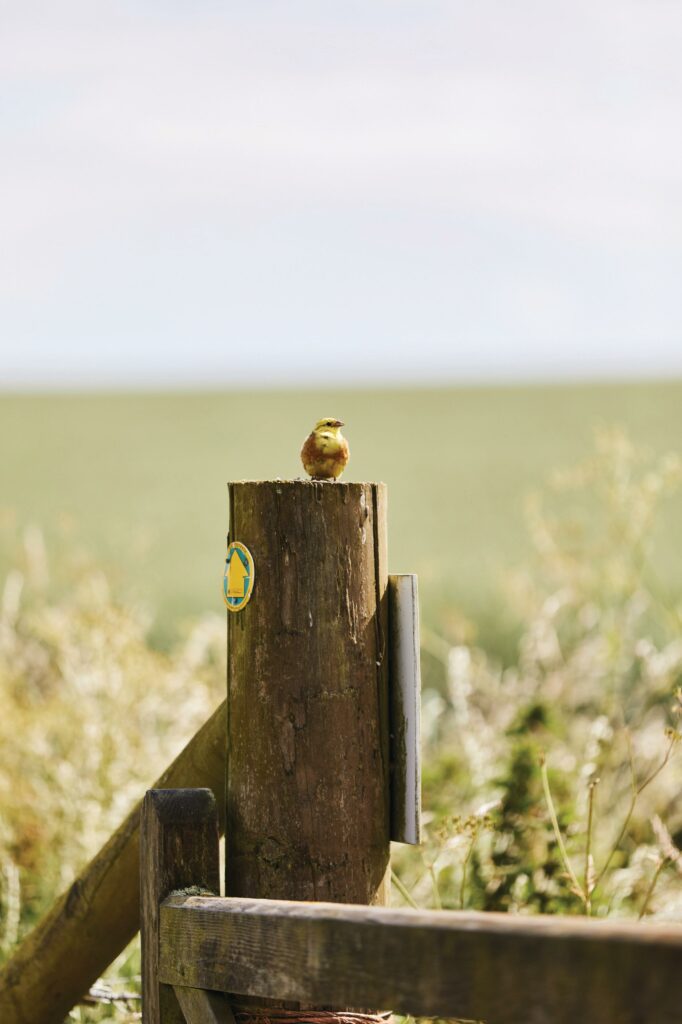
Yorkshire may seem worlds away from the sun-drenched poolsides of California where David Hockney found inspiration for the aquamarine-hued works that first brought him international fame in the ’60s and ’70s. But these peaceful, rolling Yorkshire Wolds landscapes have lived in the Bradford-born artist’s imagination since boyhood, sparking years of exciting and intense creativity. His work has made the Yorkshire Wolds famous, as the subject of striking watercolours, richly coloured paintings and vivid iPad drawings.
Born in 1937, Hockney spent his teenage summers working as a farm hand in the fields around Huggate. After graduating from the Royal Academy of Art in 1962 and travelling to the USA, Hockney soon became famous for his pool paintings of California, becoming associated with the Pop Art movement of the time. He returned regularly to Yorkshire in the 1990s to visit his mother, but by the late ’90s stayed for longer periods of time to capture the landscapes of his boyhood. Between 2004 and 2013, Hockney settled back in the seaside town of Bridlington and this gave him easy access to the Wolds’ landscapes he found so fascinating.
“Hockney was often seen out on the Wolds, working en plein air creating drawings and oils”
During those years, Hockney was often seen out on the Wolds, working en plein air creating drawings, watercolours and oils. More recently, his painterly iPad works capture the essence of this beautiful and yet rarely visited corner of Yorkshire. Of the iconic dry valleys, Hockney said: “East Yorkshire, to the uninitiated, just looks like a lot of little hills. But it does have these marvellous valleys that are caused by glaciers, not rivers. So, it’s unusual.”
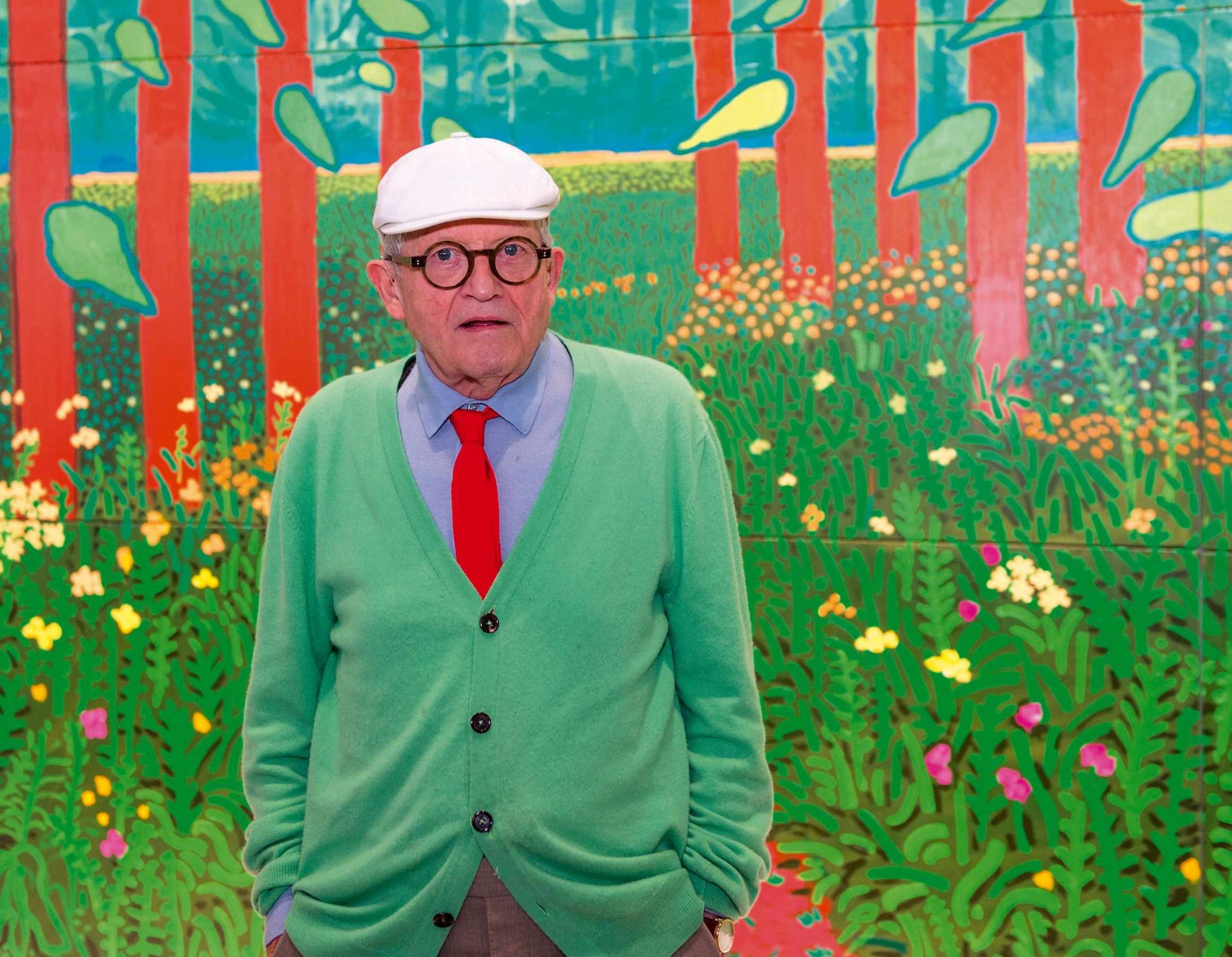
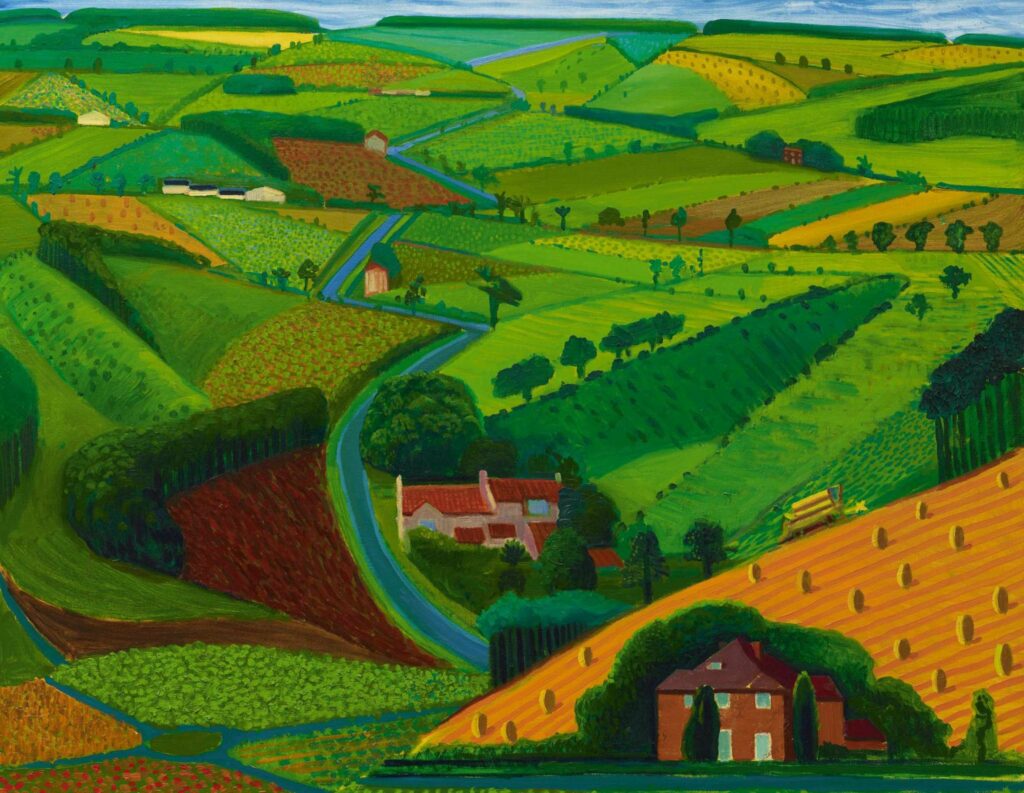
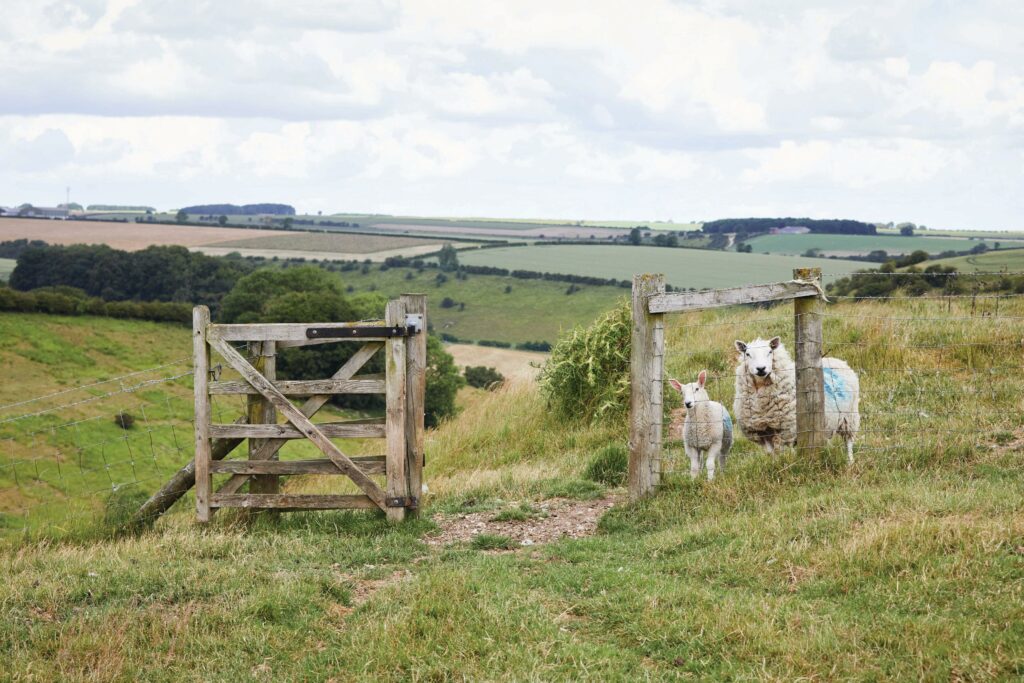
Today, the Wolds is known as ‘Hockney Country’ and there are online trails that guide you to the locations that inspired him. For a helpful itinerary, see visiteastyorkshire.co.uk.
Accompanied by my sprocker spaniel Ruby, I’m walking an 11-mile route that embraces my favourite part of the Wolds, taking us through a quintessential part of ‘Hockney Country’. We begin in Millington, a quiet village that nestles between chalk ridges, not far from the bustling East Yorkshire market town of Pocklington – aHockney favourite. In nearby Millington Wood, charcoal – which Hockney uses for sketching – is still made in the traditional way.
A LARGER VALLEY, MILLINGTON
Here we join the Yorkshire Wolds Way, a 79-mile National Trail that runs from Hessle on the north bank of the River Humber to Filey on the North Sea coast. The 11-mile section from Millington to Thixendale travels through archetypal Wolds scenery of curvaceous dry chalk valleys grazed by sheep and flat Wold tops, where rich, well-drained soil means arable farming holds sway.
September is a favourite time to visit, the hawthorns in the hedgerows heavy with deep red berries and those arable fields a patchwork of post-harvest beige separated by green hedgerows, something Hockney captured so well in paintings, such as The Road Across the Wolds (1997). It’s a landscape of quiet lanes with broad verges. Despite the Wolds Way being a National Trail, it’s peaceful here, as travellers tend to pass by on their way to the North York Moors or Yorkshire coast.
Almost immediately, we follow the line of an old earthwork, one of many to be found across the Wold tops. The Wolds are dotted with burial mounds and tumuli and this high ground was clearly once revered by our distant ancestors. ‘Wold’ is an old Anglo-Saxon word meaning wooded hill, though these hills were cleared of their trees by early settlers many thousands of years ago.
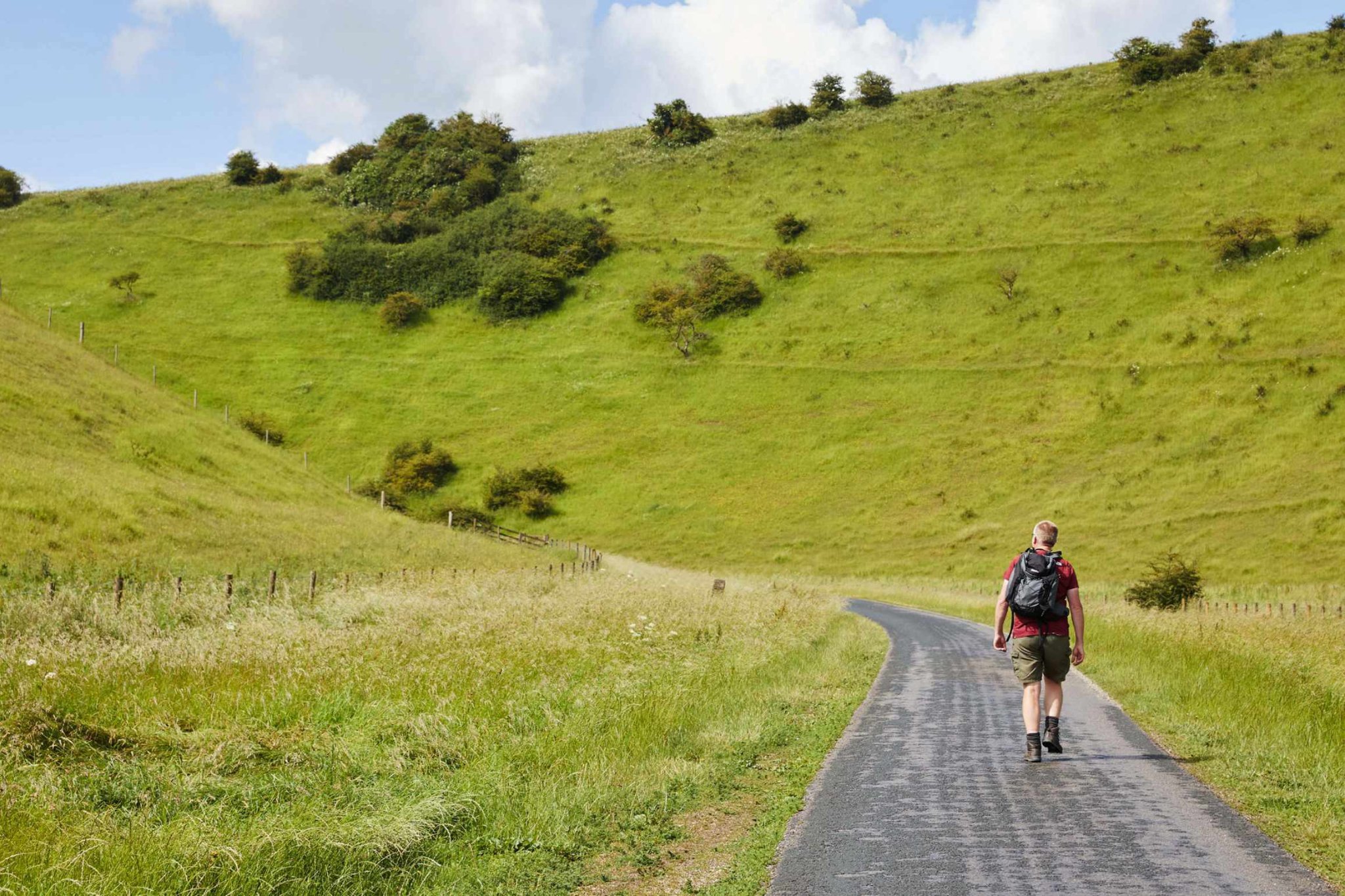
The way drops down into Sylvan Dale, the first of the day’s dry valleys. The slopes are dotted with gorse and the dale is a haven for barn owls, kestrels and red kites. The “little bit of bread and no cheese” call from the hedgerows identifies the yellowhammer, a bird that favours the arable uplands, while meadow pipits parachute down into the grassy slopes and skylarks add to the soundtrack.
Inevitably, we have to climb steeply out of the dale again, but the great thing about the Wolds is the chalk landscape drains well, so it’s rarely muddy, even after prolonged rain. The map shows the route of a Roman Road once cut across Sylvan Dale, but there was no trace of it on the ground. These steep-sided grassy slopes clearly didn’t faze the Romans in their linear cross-country journeys.
“The great thing about the Wolds is the chalk landscape drains well, so it’s rarely muddy”
The route takes us above Millington Dale, inspiration for Hockney’s verdant watercolour A Larger Valley, Millington (2008), to Nettle Dale, then it’s another stiff pull to reach the Wold top again to continue along the top of Pasture Dale. When we lived in York, this was our go-to dale in the evening, great for watching barn owls and, in winter, short-eared owls.
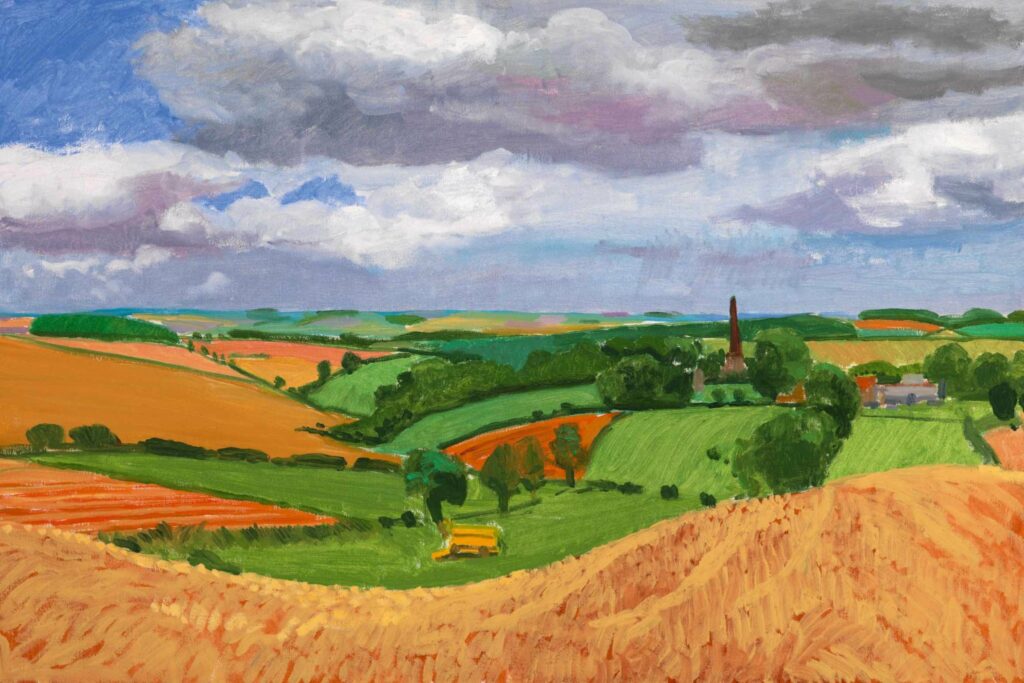
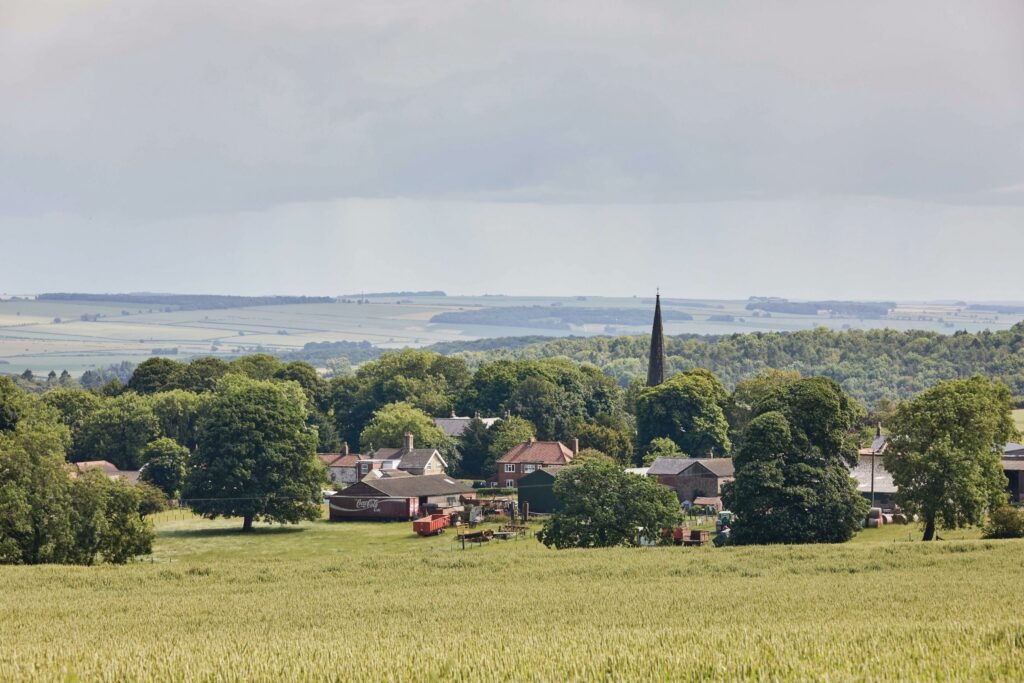
LOOKING TOWARDS HUGGATE
We continue across Huggate Pasture, where it’s just about possible to see out east to the sea, the first sighting of it on the Wolds Way before the grand finale at Filey.
On reaching York Lane, we take a brief detour to the right to see the view that inspired a number of Hockney works, including Looking Towards Huggate: Midsummer (2004) and Huggate St Mary’s Church Spire (2005). He revisited this area, where he worked during his boyhood summers, in the 2000s – the view from York Lane is instantly recognisable as the spot where he placed his deckchair to work immersed in the landscape.
We take another essential detour off route to the north-west to marvel at the Bronze Age linear earthwork of Huggate Dikes, which in many ways evokes the dry valleys of the Wolds.
A chalk track lined with trees, reminiscent of Hockney’s Late Spring Tunnel (2006), leads to the earthworks. There is much speculation about whether these dikes were a defensive structure, a boundary marker, a means to cross from Frendal Dale to Horse Dale without being seen, or maybe it was simply an early form of art, mankind recreating the shapes of the landscape. Either way, it must have taken herculean efforts to dig deeply into this chalk soil. My wife and I spent many a lazy afternoon here watching brown hares and roe deer.
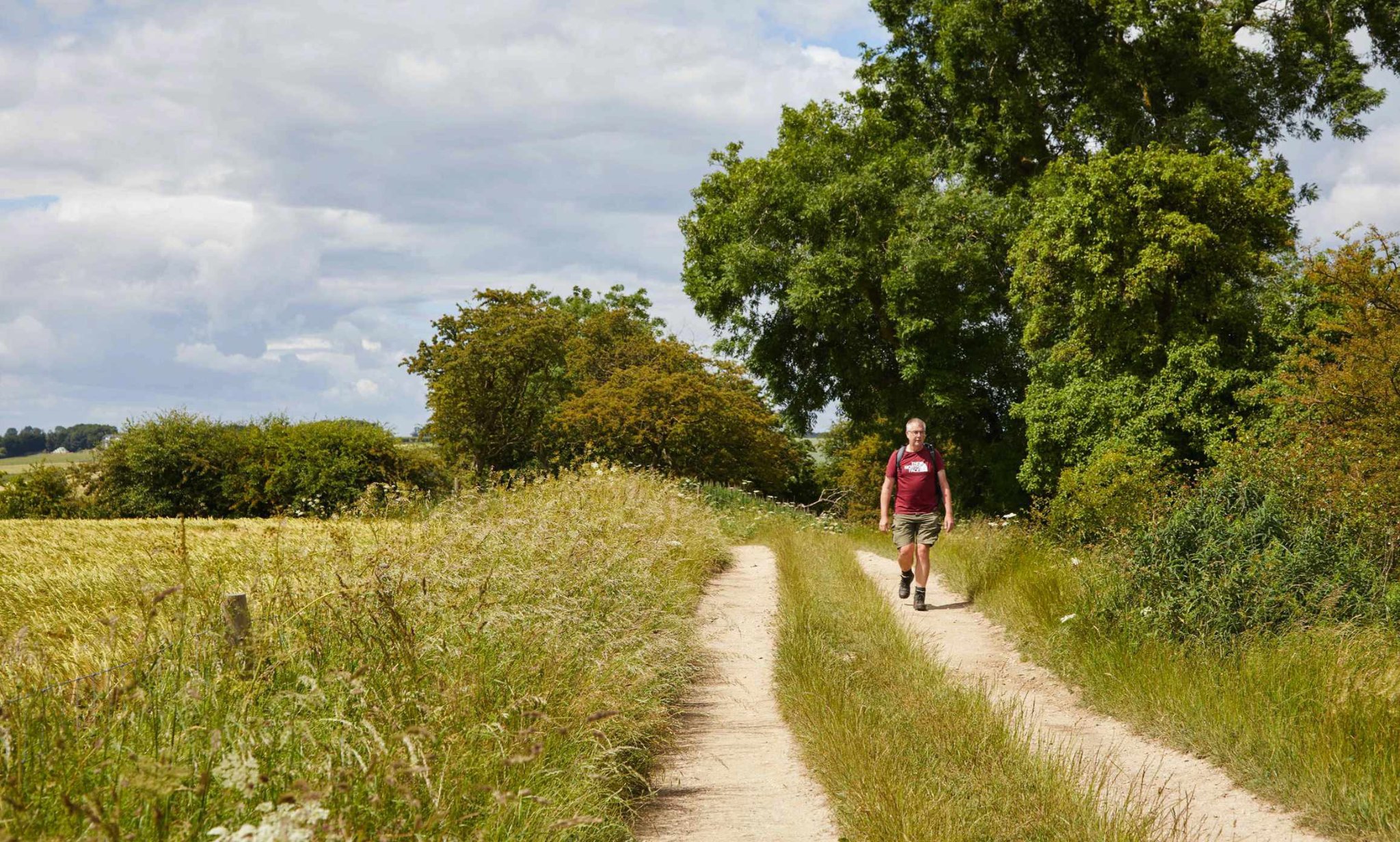
Returning to the Wolds Way, we continue via Glebe Farm – ‘glebe’ being an old word meaning a piece of land that gave income for a clergyman. The trail headed for Horse Dale, my favourite of all the snaking dry valleys. It’s a favourite for landscape photographers, too, while Hockney has captured it perfectly in exuberant iPad paintings. My thoughts turned to past visits with my wife and our dogs. We would sit on the grassy slopes among the chalkland-loving wildflowers, as little owls stared back from their nest holes in an old ash tree.
THREE TREES NEAR THIXENDALE
Continuing into Holm Dale, we stroll along the base of this dry valley, threading our way through grazing sheep and beef cattle before gaining height to head into Fridaythorpe. Fridaythorpe was the envy of many of the villages in the surrounding landscape, because it had access to water in its pond, a rare feature in this chalk landscape. The Saxons addressed the problem of water draining through porous chalk by lining hollows in the landscape with clay to collect water. There are tales of neighbouring villages coming to blows over access to water when their own supply dried up!
We step through the lych gate to 12thcentury St Mary’s Church. This ancient church is one of the famous Sykes churches, restored in the early 20th century by Sir Tatton Sykes II of nearby Sledmere House, who set about restoring the older churches across the Wolds. Sledmere House and its estate village is worth a visit, a clear favourite with Hockney, who painted a number of scenes of the attractive village. The Road to York Through Sledmere (1997) is my favourite, with its colourful, cartoon-like quality.
We turned west here with the Wolds Way as it continued its meandering course through West Dale and across into Thixendale. Some say that Thixendale is named after the 16 dales that converge on this point, but that seems to be an exaggeration, although there are certainly quite a few. More likely it is named after Sigstein, an old Scandinavian name.
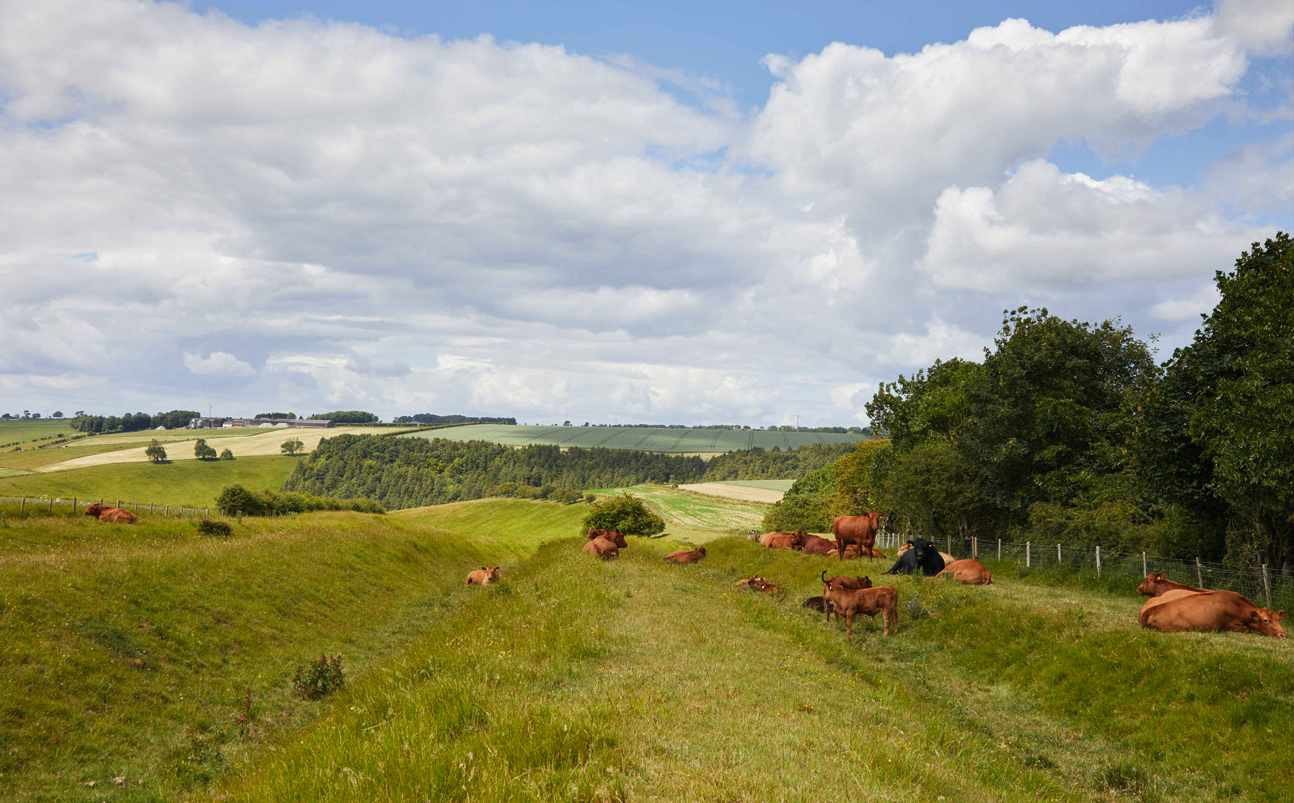
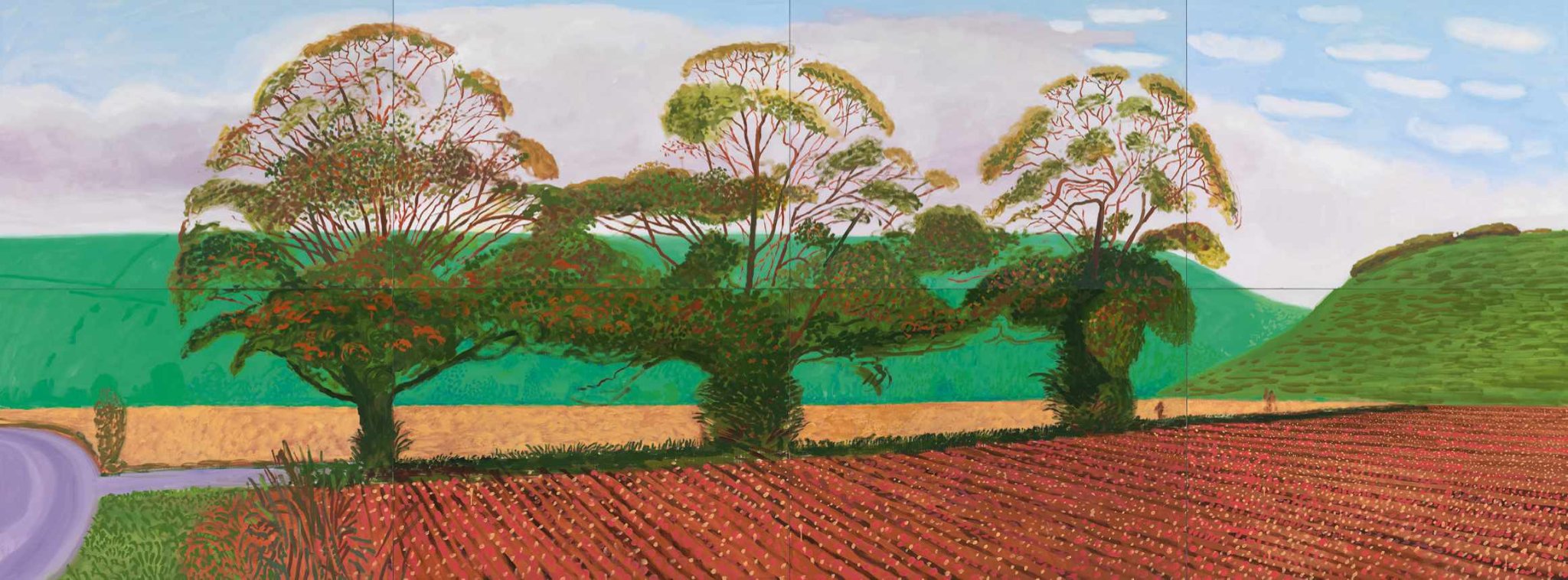
Strolling north through the dale towards the junction with Fotherdale, a complex array of nest boxes and hides graces the valley slopes and trees on the left. This is the work of wildlife artist and photographer Robert Fuller, whose gallery can be found at nearby Fotherdale Farm.
Our final leg headed effortlessly into Thixendale for another brief diversion along the road to Burdale to another favourite Hockney location. Beside the road are Three Trees near Thixendale (2007–2008), which Hockney would paint in each of the seasons. It was then simply a case of retracing our steps to Thixendale for a well-deserved pint of Wold Top brewery beer at the Cross Keys Inn and the end of this Wolds Way adventure.
Like Hockney, I had once been very familiar with the Wolds landscape, but after we moved away to the Yorkshire Dales, our visits became infrequent. But as with Hockney, I was drawn to return and I understood why we had both missed this part of Yorkshire. In his works, Hockney has distilled the essence of the Wolds and captured perfectly the elements of this landscape that I find so appealing: quiet, winding lanes; iconic dry valleys; the rolling patchwork of arable fields and hedgerows; those pockets of trees and charming villages. I won’t leave it quite so long before I return again.
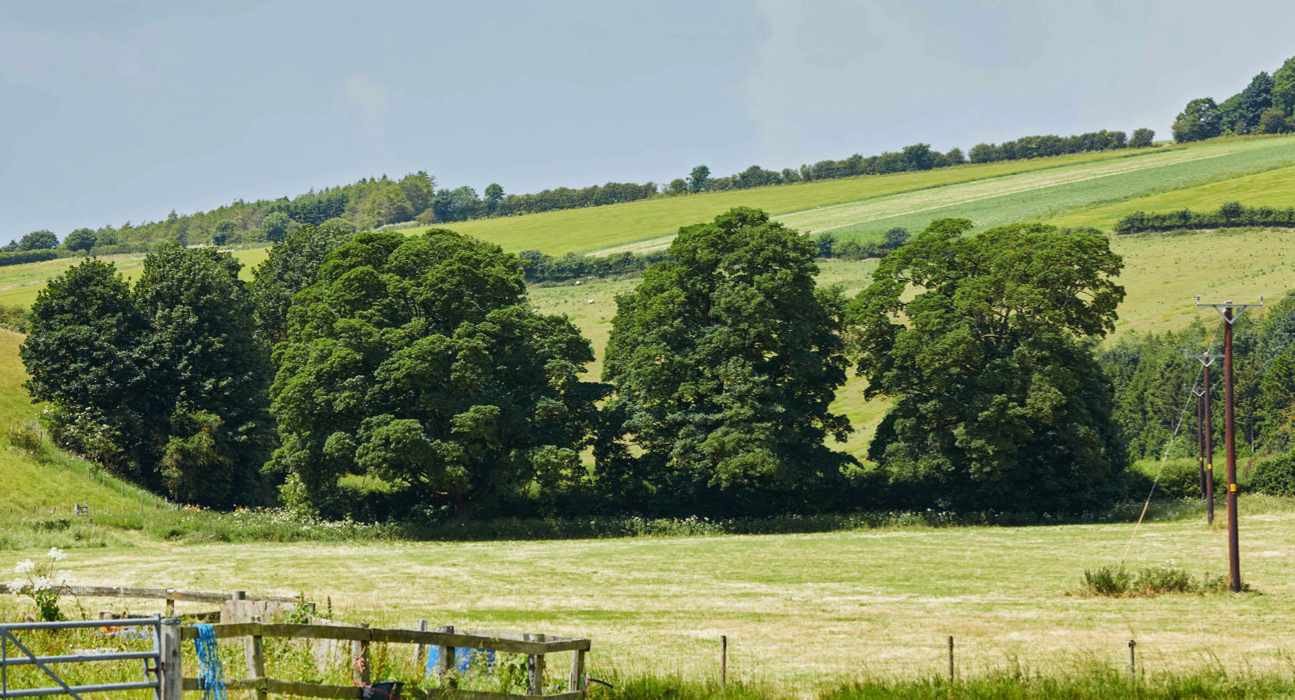
See Hockney’s works
• Head to the 1853 Gallery at Salt’s Mill in Saltaire, West Yorkshire. This houses a permanent exhibition of Hockney’s work and is one of the largest collections of his art. saltsmill.org.uk
• The immersive 360° audiovisual exhibition, David Hockney: Bigger & Closer (Not Smaller & Further Away) is on at Lightroom in London’s King’s Cross until 1 October. lightroom.uk
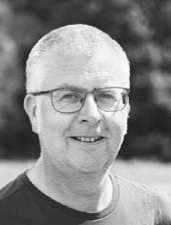
Chris Gee has spent the last 10 years exploring the Yorkshire Wolds in all seasons and has completed the Yorkshire Wolds Way. Chris is author of Walking the Yorkshire Coast: A Companion Guide (PixZ Books).
DISCOVER OTHER YORKSHIRE LANDSCAPE ARTISTS
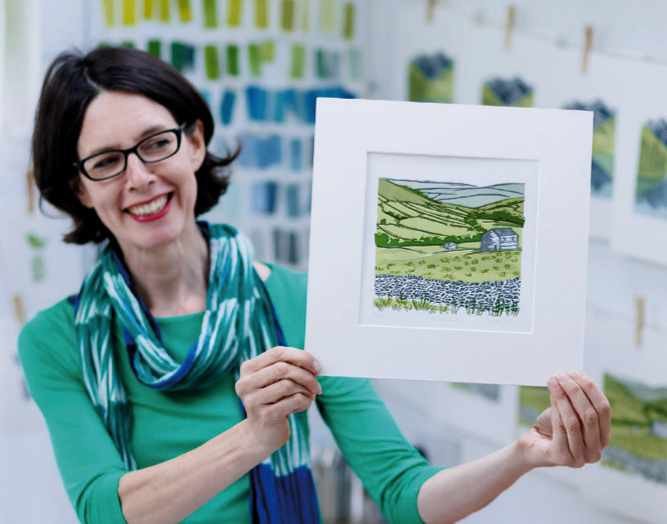
Michelle Hughes
York-based Michelle produces original linocut prints inspired by the British countryside. Yorkshire and the Lake District feature heavily in her work.
michellehughesdesign.com
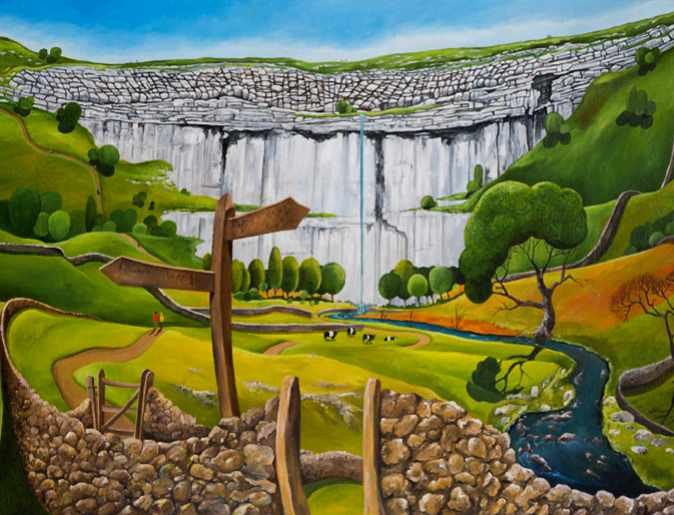
Martyn Simpson
Working mainly with oil on canvas, Martyn produces quirky paintings of Yorkshire landscapes and townscapes.
martynsimpson.co.uk